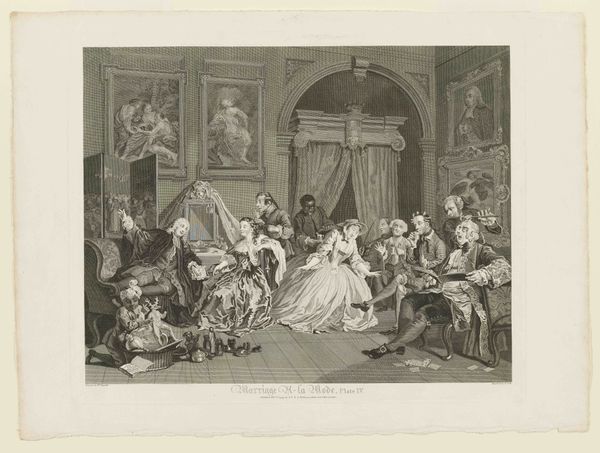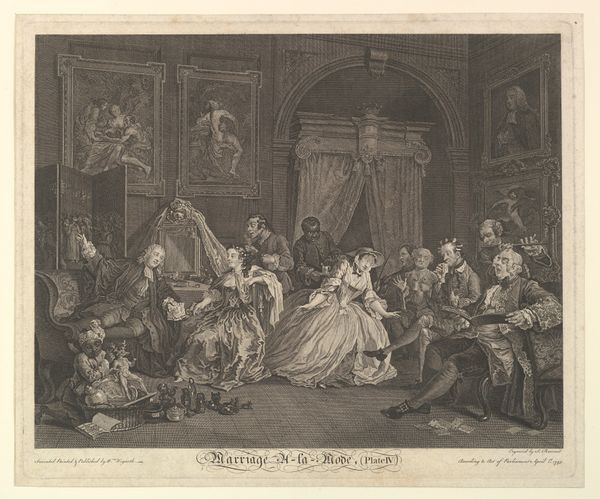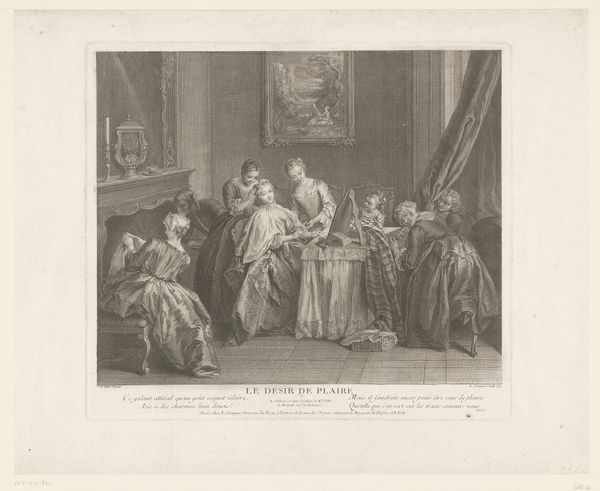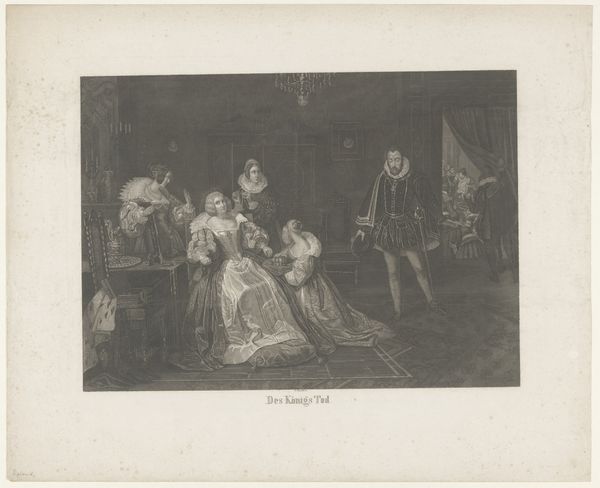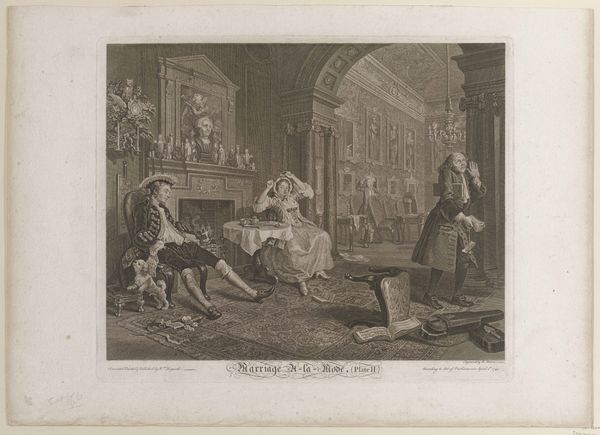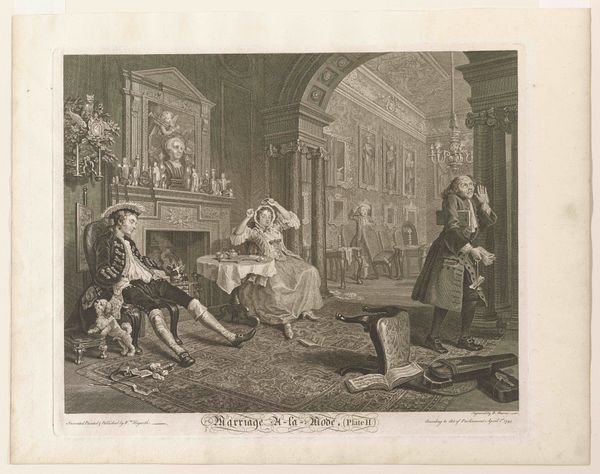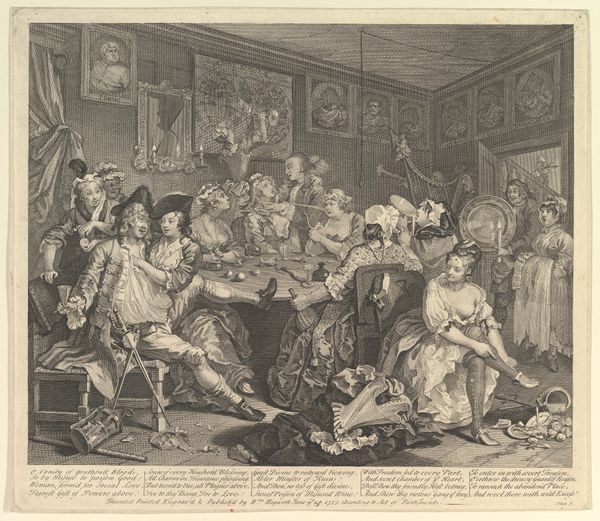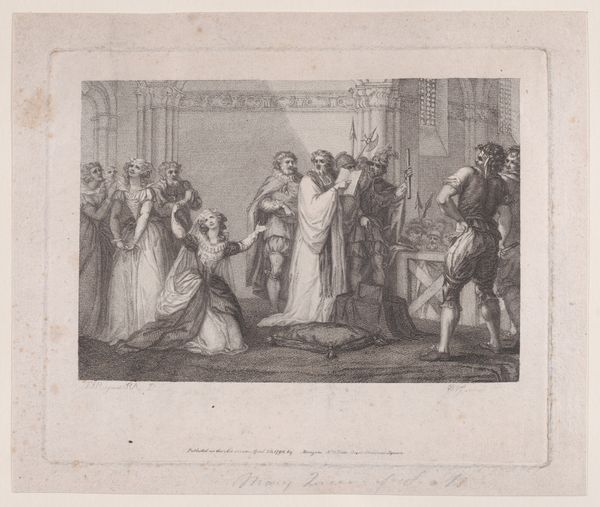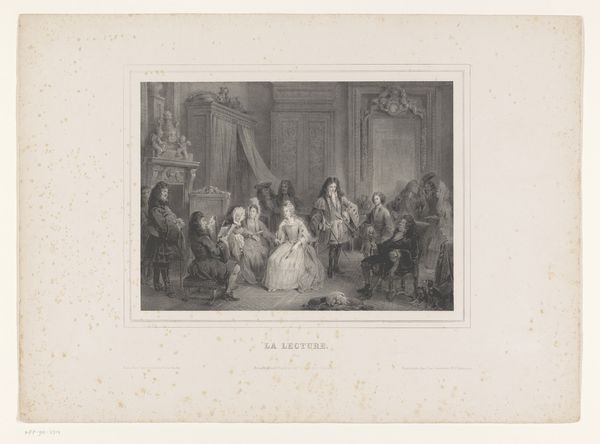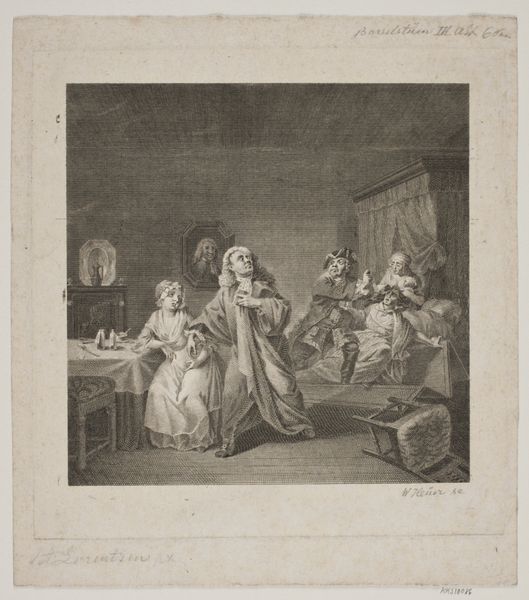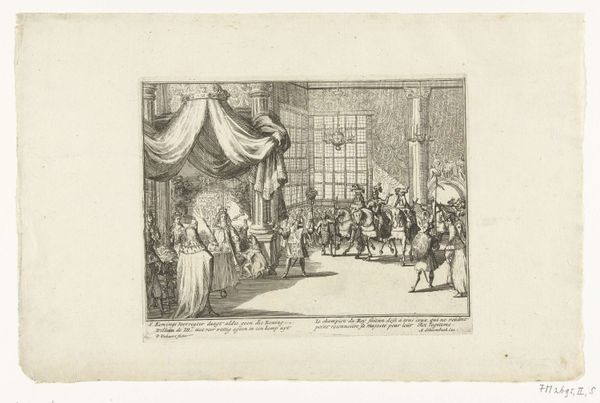
print, engraving
#
portrait
#
narrative-art
#
baroque
# print
#
genre-painting
#
history-painting
#
academic-art
#
engraving
Dimensions: 15 1/4 x 18 1/2 in. (38.74 x 46.99 cm) (plate)
Copyright: Public Domain
Curator: This engraving, Plate IV from William Hogarth’s series *Marriage A-la-Mode*, was created around 1745 and now resides here at the Minneapolis Institute of Art. My initial impression is one of societal chaos barely masked by elegant interiors and attire. Editor: Chaos is a fine way of putting it. The scene reminds me of those incredibly staged family portraits where you just know something’s amiss beneath the surface smiles. Curator: Exactly! Hogarth was a master of visual storytelling and critique, loading his prints with symbols. Take the overturned chair, for instance. It’s hardly an accident. Think of it as a physical manifestation of the domestic disruption occurring here. The man with the instrument seems entirely oblivious. Editor: Instruments often symbolize harmony, but his blatant indifference screams a lack of connection or perhaps a deliberate ignorance of what's going on around him. I am noticing all these figures are somewhat trapped by the cultural impositions depicted by symbols of class, wealth, and propriety. Curator: Hogarth doesn't shy away from critiquing aristocratic pretensions and the transactional nature of marriages in his era. It seems all they see is reflected back by mirrors. Even the children are playing adult roles. What do they actually learn of their own potential? Editor: And notice the art on the walls. Almost obscene. Do you think that these characters understand the symbolism contained in what is obviously 'fine art'? All this splendor, yet they seem empty, like puppets in a play of social performance, bound by economic imperatives. The dog included! Curator: Precisely! A society bound by empty ritual, heading for disaster... The title alone is sardonic. 'Marriage A-la-Mode', or marriage in the modern style is indeed more 'à la misery'. It’s fascinating how relevant this critique of superficiality remains. Editor: These scenes really make you consider the staying power of symbols, right? Hogarth gave us a sharp snapshot that's echoed down the centuries. The question is - what do we choose to take away from the echoes of our past? Perhaps inspiration to re-tune what truly resonates. Curator: Definitely a call for an examination of ourselves and our relations. So perhaps, after all, something meaningful can arise from witnessing what feels like chaos.
Comments
No comments
Be the first to comment and join the conversation on the ultimate creative platform.

